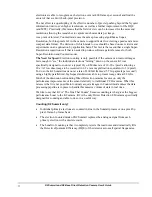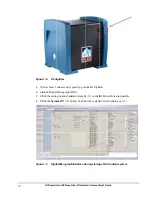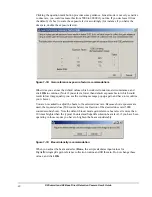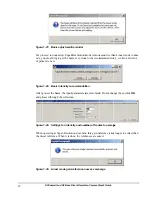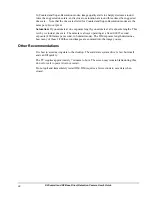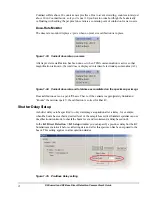
K2 Summit and K2 Base Direct Detection Camera User's Guide
25
The first step is to acquire and upload a dark reference to the processors. Preparing a
hardware dark reference for K2 Super-Resolution mode is optional if it has been completed
recently but is highly recommended preceding a Super-Resolution gain reference acquisition.
A gain reference taken immediately following a fresh hardware dark reference will not be
invalidated by a subsequent fresh dark reference. Gain references taken in this manner can
last a number of days with only hardware dark reference updates performed more frequently.
Hardware dark reference update should be performed at least once per day for optimum
counted and super-resolution performance.
figure 1-24. Hardware dark reference option
Next the linear gain reference is automatically uploaded. These references are used for
correcting the images in the processors before electron detection and counting.
The Exposure Setup window opens, as seen in previous steps, and we will proceed as before.
Again you can click
Expert Mode
to restore the defaults or save non-default values. Note
that in Super-Resolution mode the dose rate is much more tightly constrained—too high of a
dose rate and electrons are undercounted. Think carefully before using a dose rate other than
the default value.
In the following figures showing dialog boxes, the default values are given for Super-
Resolution mode but the procedure will result in reference images for both Super-Resolution
and Counting modes as the counted reference image is derived from the super-resolution
image. The dose rates in the dialog box, multiplied by four, correspond to the per-pixel
recommended dose rate for reference images.

